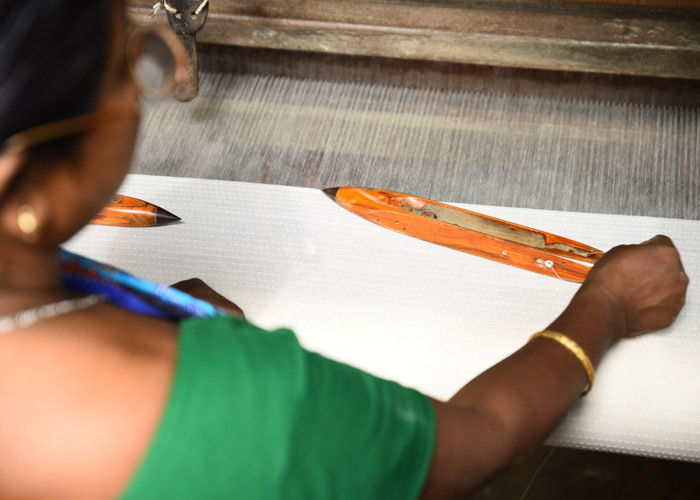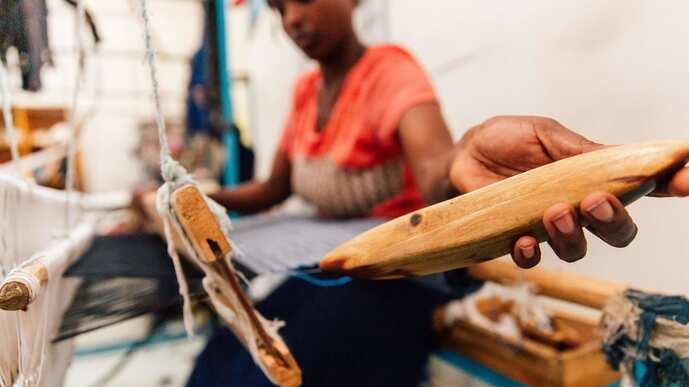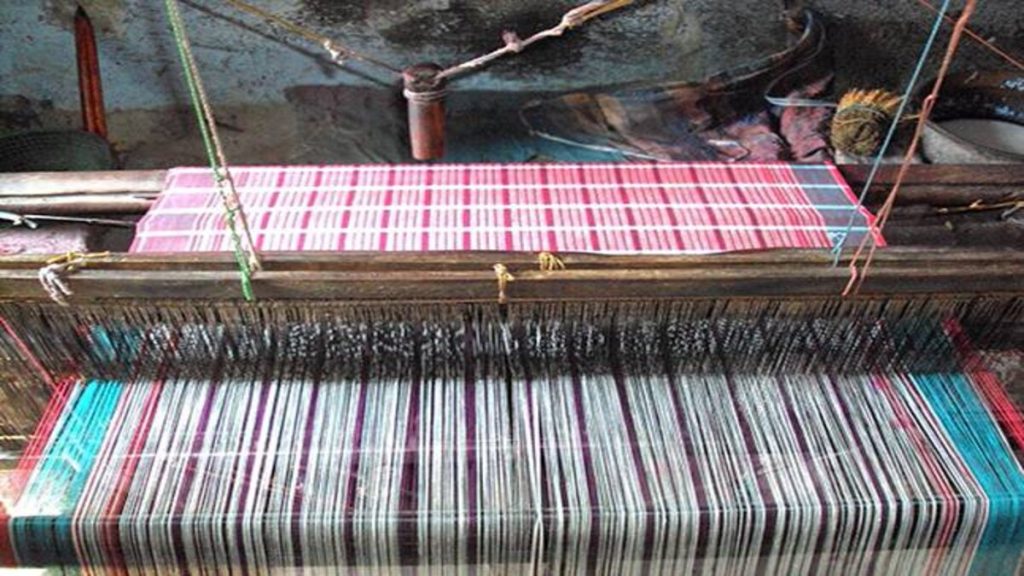English artisans resisted the widespread adoption of mechanisation at the turn of the nineteenth century out of concern that they would be rendered obsolete. This event is known as the Luddite uprising. Since then, handicrafts like weaving have been threatened by the rise of the machine age.
Every Bengali child born in the 20th century has memorised Rabindranath Tagore’s folk-rhyme “The house of the weaver, turned into the house of frogs; Eating, singing happily ever, The tadpoles of croaking frogs,” which eloquently depicts the plight of the handloom weavers (Tanti in Bengali). The song describes how handlooms became extinct with the invention of the power loom. The weavers had given up their jobs. Due of the lack of handloom, their workplace has turned into a frog breeding ground.

If one looks closely at the Inathnagar region of West Bengal, which is located in the Somaspur gramme panchayat of the Dhaniakhali block, one would find the the last vestige of ever glorious handlooms at every household. Although the social, economic, and policy climate for sari production is unfavourable, many people are still actively involved in the process.
Young and old people arestill working with his cousins and other relatives to produce beautiful handloom saris. Running a handloom business successfully requires the help of a family member, often a woman.

It appears that handloom is constructed using an indigenous “technology” (an instrumental design that reduces the uncertainty in cause-effect relationship) that involves connections and arrangements that are both delicate and complex, requiring patience, coordination of mind, body, and legs, as well as experience, ingenuity, practise, and dexterity.
The rural communities of the North East, which include West Bengal and many other locations in India, are still trying their best to keep handlooms and handicrafts alive despite the increasing competition. The government and companies would do well as part of their corporate social duty to ensure that the method, knowledge, and skill of handloom weavers are not lost to posterity through the inadvertent lack of action taken by previous generations.

